Recent studies suggest that machine learning healthcare innovations could reduce diagnostic errors by up to 40%, potentially saving thousands of lives each year.
Imagine a world where diagnostic errors drop by 40% —not just because humans become better doctors, but because machines are helping us save lives. Machine learning healthcare is doing exactly that: transforming how we understand diseases, personalize treatments, and streamline every step of the medical journey. Driven by advanced algorithms, learning models, and ever-expanding datasets, today’s hospitals and care providers are harnessing artificial intelligence to improve patient outcomes, eliminate errors, and even predict medical conditions before symptoms appear . In this article, you’ll discover how machine learning healthcare is reshaping the landscape of medicine—turning data into life-saving insights.
Understanding Machine Learning Healthcare: Foundations and Real-World Impact
Machine learning healthcare is more than a buzzword—it's a practical revolution. At its core, machine learning in health refers to the application of sophisticated algorithms that learn from patterns across vast data sets—think electronic health records, medical images, or even notes from clinicians. These algorithms help care professionals and researchers identify subtle disease indicators, streamline workflows, and even anticipate outbreaks before they happen. Unlike traditional data analysis, machine learning adapts over time, improving its accuracy with each new patient data point, ultimately improving both patient care and provider efficiency.
Consider a hospital where care providers collaborate around a digital hub, drawing insights from hundreds of thousands of patient records in real time. Suddenly, early warning signs of sepsis, cancer, or heart disease don’t go unnoticed—they’re flagged instantly, enabling timely intervention. From predicting adverse drug reactions to optimizing surgery schedules, machine learning in healthcare delivers a data-driven approach that supports both patients and clinicians. It’s transforming the care industry, lowering costs, and raising the standard of patient care globally.

- You will learn how machine learning healthcare is revolutionizing patient care.
- Explore how it streamlines workflows for care providers.
- Understand breakthroughs in medical research powered by advanced data analysis.
Machine Learning Healthcare: Key Concepts and Technologies
Defining Machine Learning in Healthcare
Machine learning in healthcare involves using algorithms that learn autonomously from medical datasets instead of relying strictly on pre-programmed rules. These learning models analyze structured and unstructured data, such as lab results, radiology images, patient histories, and wearable device data to generate actionable predictions. By continuously updating with fresh patient data, machine learning algorithms adapt, refine, and improve—making them invaluable across diagnosis, prognosis, and ongoing treatment planning.
What differentiates machine learning healthcare from traditional computing is its ability to uncover hidden patterns—a single scan or electronic health record can feed back into the model, strengthening its predictive accuracy for future patients. This self-reinforcing loop supercharges patient care and clinical decision-making, putting advanced insights directly in the hands of care providers.
How Learning in Healthcare Differs from Traditional Methods
Traditional healthcare approaches often rely on guidelines or protocols developed from limited clinical trials and experience. In contrast, learning in health leverages vast data sets across demographics, regions, and clinical environments, giving it a broader scope. Instead of static, one-size-fits-all solutions, machine learning models in healthcare produce personalized recommendations—tailoring care, diagnoses, and treatment plans to each individual’s unique profile.
The integration of machine learning algorithms means that care providers no longer work alone; rather, they are supported by sophisticated data-driven decision tools. This dynamic approach especially shines in complex areas like rare disease detection, where traditional methods might falter due to a lack of precedent or expertise.
Artificial Intelligence vs. Machine Learning Healthcare Applications
While the terms are often used interchangeably, artificial intelligence (AI) in healthcare is a broader field, aiming to replicate aspects of human reasoning and decision-making. Machine learning, however, is a specific subset—focusing on algorithms that learn independently from data. In healthcare, this distinction is critical: AI may involve natural language processing for transcribing clinical notes, while machine learning concentrates on building predictive models to forecast disease risk or optimize patient flow.
Machine learning in healthcare serves as the engine behind AI’s most transformative capabilities—fueling advancements in medical imaging, risk prediction, and automated decision support. In short, all machine learning healthcare solutions are AI, but not all AI is powered by machine learning algorithms.
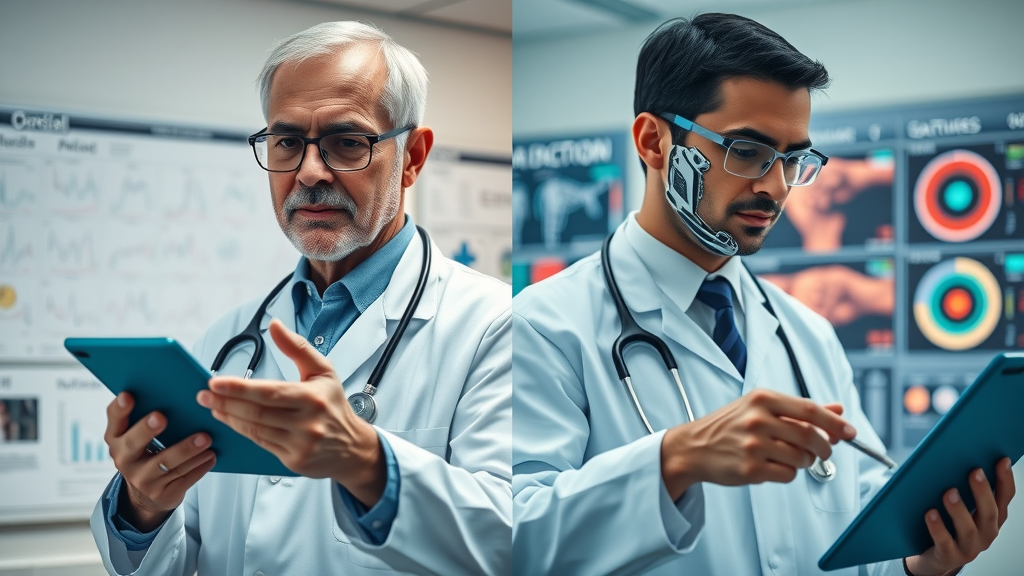
Types of Machine Learning in Healthcare and Key Models
Supervised Learning in Health: Applications and Examples
Supervised learning sits at the heart of most deployed machine learning healthcare solutions. In this approach, the model is trained on labeled data sets—for example, known cases of pneumonia on chest X-rays—so it can recognize similar patterns in new patients. Applications abound: from classifying tumors as benign or malignant, to predicting which patients are at greatest risk for hospital readmission after surgery.
Supervised learning models can support care providers by automating rote diagnostic tasks, freeing up time for more nuanced patient interaction. By continually learning from an expanding array of labeled medical images, test results, and health records, these algorithms incrementally boost the accuracy and consistency of diagnosis—ultimately saving more lives.
Unsupervised Learning in Healthcare: Detecting Patterns and Anomalies
Unsupervised learning explores medical datasets without predefined labels, making it ideal for discovering hidden trends or unknown disease subtypes. For instance, clustering algorithms can group patients based on genetic markers or responses to treatments—helping care providers uncover new avenues for personalized medicine.
This approach is particularly powerful in medical research, where identifying outliers (such as an unexpected drug reaction) can spotlight rare but clinically significant conditions. By highlighting anomalies within health data, unsupervised learning models contribute to early disease detection and optimal treatment plan development, transforming raw data into clear, actionable medical insights.
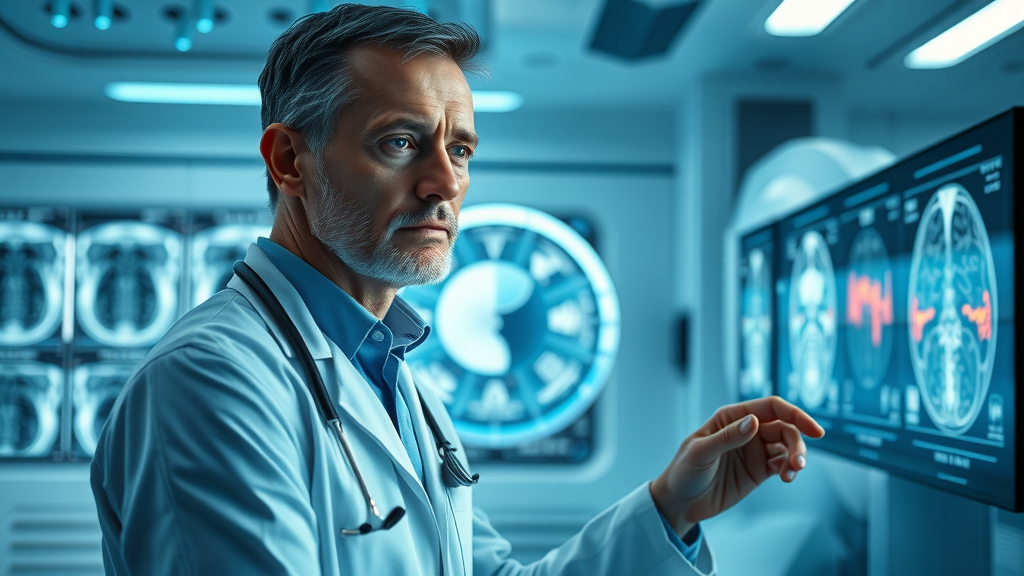
Deep Learning and Neural Networks: Advancing Medical Imaging and Diagnostics
Deep learning utilizes artificial neural networks—computational systems inspired by the brain's structure and function—to analyze complex medical images and datasets. Unlike basic machine learning algorithms, deep learning models can directly ingest and process high-dimensional data such as a CT scan, detecting microcalcifications or subtle lesions that might elude human eyes.
This technique has already led to advancements in fields like radiology and dermatology, where neural networks excel at classifying tumors, lesions, or fractures with near-expert accuracy. For care professionals, the integration of deep learning accelerates diagnostic workflows, ensures timely intervention, and delivers a level of detail that sets a new standard for medical imaging in patient care.
Reinforcement Learning for Healthcare Process Optimization
Reinforcement learning introduces algorithms that learn to optimize complex processes by receiving feedback from their own actions—think of them as digital apprentices. In healthcare, this might involve improving operating room schedules, optimizing resource allocation, or even personalizing drug dosing regimens by learning from patient data and outcomes.
The future holds exciting possibilities, with reinforcement learning poised to tackle challenges like treatment adherence and chronic disease management. By adapting to live clinical data, these systems can continually refine workflows, improve patient outcomes, and drive efficiency across entire hospital systems.
| Type | Primary Use | Strengths | Typical Examples |
|---|---|---|---|
| Supervised Learning | Classification, Prediction | High accuracy with labeled data, supports diagnosis | Cancer detection, risk scoring, disease classification |
| Unsupervised Learning | Clustering, Anomaly Detection | Finds unknown patterns, no labels required | Disease subtyping, outlier detection, patient segmentation |
| Deep Learning (Neural Networks) | Imaging, Complex Data Analysis | Handles large, complex data sets, superior in medical imaging | Radiology, dermatology, pathology image analysis |
| Reinforcement Learning | Process Optimization | Dynamic adaptation, continuous feedback | Resource scheduling, adaptive treatment plans |
The Role of Machine Learning Healthcare in Patient Data and Electronic Health Records
The backbone of effective machine learning healthcare lies in accessing and securely managing patient data. Electronic health records (EHRs) —digital versions of patients’ paper charts—contain invaluable details like medical history, lab results, and treatment outcomes. When paired with advanced machine learning models, this data transforms from static records to dynamic sources of predictive power.
Care providers gain the ability to spot emerging health trends, tailor interventions, and even automate reminders for follow-up care. The interaction between machine learning healthcare tools and EHRs is accelerating the shift toward precision medicine—where treatment plans are based on each person’s unique data profile.

Leveraging Electronic Health Records with Machine Learning Models
By feeding large volumes of data from electronic health records into learning models, care professionals unlock opportunities for predictive analytics, risk stratification, and automated alerts. These machine learning models identify which patients are at risk for complications, ensure medication adherence, or streamline documentation with minimal manual entry.
Ultimately, this synergy reduces administrative burdens for care providers while putting timely, relevant information at their fingertips—improving outcomes and reducing errors.
How Patient Data Drives Machine Learning Healthcare Success
The success of machine learning healthcare hinges upon diverse, high-quality patient data sets. The more comprehensive the data—covering different populations, genetic backgrounds, and comorbidities—the more robust and generalizable the resulting learning algorithms.
Modern machine learning healthcare tools continuously learn from this data influx, detecting subtle correlations that human researchers might miss. This iterative improvement cycle means predictions become more accurate—and adaptable—over time, benefiting both patients and healthcare systems at large.
Ensuring Privacy and Security in Health Records
Protecting patient privacy is foundational to adopting machine learning in health. Strict data encryption, anonymization, and compliance with laws like HIPAA ensure sensitive health records stay secure. Leading-edge machine learning healthcare models are developed with privacy-by-design, encrypting data both in transit and storage.
As patient data powers groundbreaking insights, robust security measures let patients and providers trust machine learning healthcare solutions without risking confidentiality.
"The integration of machine learning healthcare tools within electronic health record systems has already begun streamlining both diagnosis and treatment planning." — Modern Healthcare Analytics Journal
Applications of Machine Learning Healthcare: How Care Providers and Patients Benefit
The impacts of machine learning healthcare are seen every day by patients and care providers alike. From earlier disease detection to personalized medicine and workflow automation, machine learning is advancing the care industry on several fronts:
- Early Disease Detection and Diagnosis
- Personalized Treatment Plans
- Medical Imaging Enhancement
- Predictive Analytics for Population Health
- Workflow Automation for Care Providers
Early detection of conditions like cancer, diabetes, or heart disease can now happen at unprecedented speed and accuracy thanks to predictive machine learning models. Medical imaging technologies, powered by deep learning neural networks, reveal details invisible to even experienced eyes—while workflow automation tools streamline everything from billing to appointment scheduling. Patients receive more precise, individualized care while providers reclaim valuable time to focus on human-centered interactions.

Machine Learning Healthcare: Success Stories and Emerging Use Cases
Breakthroughs in Cancer Detection Using Machine Learning
Some of the most compelling advances in machine learning healthcare are happening in oncology. Deep learning algorithms have achieved equal—or even superior—accuracy to seasoned radiologists for detecting tumors in mammograms and CT scans. By reviewing thousands of medical images, the learning model rapidly recognizes malignancies, often before symptoms emerge. This early detection can mean the difference between successful treatment and a missed chance for intervention.
Hospitals around the world are now deploying these tools as diagnostic second opinions or triage systems, ensuring that no anomaly goes unnoticed.
Diabetes and Chronic Disease Management with Neural Networks
Managing chronic conditions such as diabetes is complex, with countless variables affecting each patient's health trajectory. Here, neural networks excel by integrating vast streams of patient data—glucose readings, medication adherence, exercise logs—and delivering dynamic care recommendations in real time.
For patients and care providers, this means earlier interventions, fewer complications, and personalized treatment regimens that adjust automatically as patient data are updated.
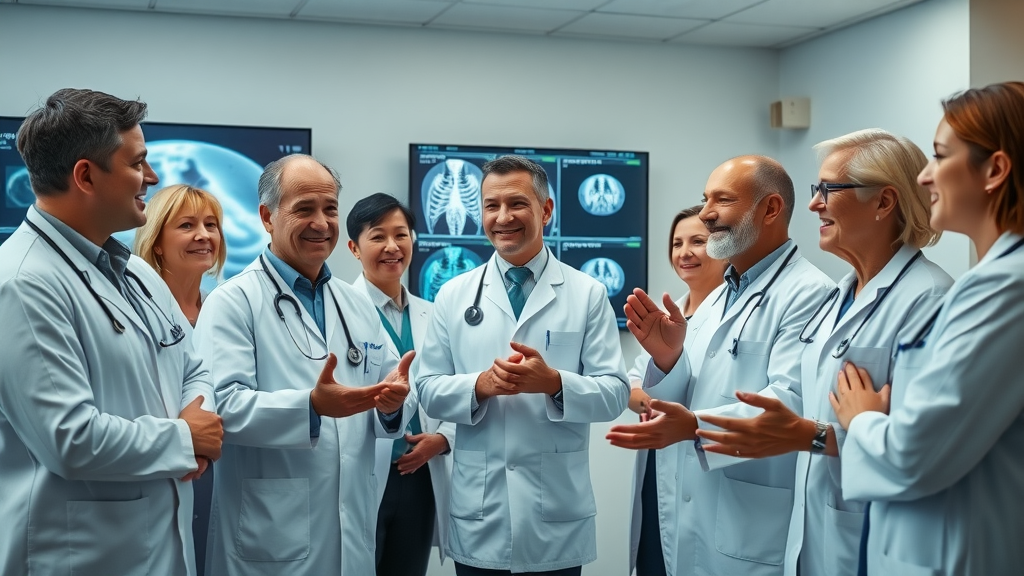
Predicting Hospital Readmissions and Improving Patient Outcomes
Many hospitals now use machine learning healthcare algorithms to identify patients at high risk of readmission. These advanced models sift through EHRs, previous health records, and ongoing care activity to forecast challenges—such as medication non-compliance or post-surgical complications—and prompt preemptive outreach.
This targeted approach both improves patient outcomes and reduces healthcare costs, illustrating the tangible benefits of machine learning in health on a population scale.
Optimizing Care Provider Decision-Making Processes
Care providers operate under constant pressure to make the right call—fast. Machine learning healthcare tools provide decision support, suggesting diagnostic tests, highlighting drug interactions, or flagging errors before they happen.
This assistance empowers all care professionals—from junior nurses to seasoned specialists—to work together more effectively, reduce error rates, and deliver safe, efficient patient care.
- Top Healthcare Sectors Implementing Machine Learning:
- Radiology
- Cardiology
- Oncology
- Emergency Medicine
- Primary Care
How is Machine Learning Used in Healthcare?
Machine learning in healthcare is used for risk prediction, automating diagnostics, personalizing patient treatments, streamlining administrative workflows, and analyzing vast datasets for research and clinical decision-making purposes.
Healthcare organizations use machine learning to mine historical patient data, monitor ongoing care, and continually refine both diagnostics and therapies. Whether in the lab or the ward, these strategies help clinicians identify risk early and intervene before problems escalate.

What is the Difference Between AI and Machine Learning in Healthcare?
Artificial intelligence in healthcare is a broader domain aimed at replicating human intelligence, while machine learning healthcare focuses on systems that learn from data independently, often serving as a foundational component of AI.
While AI tools like robotic surgery or speech recognition may not directly rely on machine learning, the most powerful clinical decision support tools are grounded in adaptive learning algorithms. This distinction clarifies why machine learning is the true engine behind many medical AI breakthroughs.
Which AI Tool is Best for Healthcare?
The best AI tool for machine learning healthcare depends on the application, but industry leaders include IBM Watson Health for clinical decision support, Google Health's DeepMind for medical imaging, and TensorFlow for research and development of customized models.
Selection depends on workflow needs, security requirements, and the scale of integration with electronic health records or health information systems.
What Jobs Will AI Replace in Healthcare?
Machine learning healthcare tools are likely to automate repetitive diagnostic tasks, some administrative roles, and aspects of image analysis, but will also create new opportunities for care providers skilled in digital health techniques.
Rather than eliminating physicians or nurses, machine learning in health supports care professionals by eliminating paperwork, automating test ordering, and enabling staff to focus on complex patient care and new technology roles.
"AI and machine learning in healthcare will not replace doctors, but they will dramatically alter how care providers interact with patients and data." — HealthTech Review
Frequently Asked Questions About Machine Learning Healthcare
-
Can machine learning healthcare improve patient safety?
Yes, machine learning can identify potential errors, alert providers to anomalies, and ensure compliance with clinical guidelines, directly reducing preventable harm and improving safety outcomes for patients.
-
What are the challenges in adopting machine learning in healthcare?
Challenges include data privacy concerns, ensuring data quality, integration with existing electronic health records, clinician training, regulatory hurdles, and the risk of algorithmic bias affecting certain populations.
-
How is patient privacy maintained in machine learning healthcare models?
Privacy is maintained through data anonymization, strong encryption, access controls, and adherence to legislation like HIPAA. Developers and healthcare systems invest heavily in cybersecurity to safeguard sensitive patient information.
-
How are care providers trained to use machine learning healthcare tools?
Providers receive training through specialized courses, on-site workshops, and ongoing education to understand the capabilities, limitations, and ethical use of AI and machine learning systems in clinical practice.
Challenges and Future Directions for Machine Learning Healthcare
Ethical Considerations and Bias in Machine Learning Models
Addressing ethical concerns is crucial as machine learning healthcare tools become more prevalent. Algorithmic bias can inadvertently disadvantage minority groups if data sets are unrepresentative, leading to skewed outcomes. Healthcare leaders must scrutinize model transparency, accountability, and fairness—ensuring that technology amplifies, rather than undermines, equity in patient care.

Data Quality, Privacy, and Security in Healthcare Applications
High-quality, diverse data is essential for effective machine learning healthcare solutions. Protecting this data from breaches while ensuring interoperability across devices and systems remains a difficult but essential challenge. Strong regulatory frameworks and continuous monitoring help safeguard both the confidentiality and utility of sensitive health records.
Interoperability of Machine Learning Tools with Existing Health Systems
Seamless integration with hospital information systems, lab platforms, and medical devices is necessary for machine learning in health to reach its full potential. Designing adaptable, standards-based interfaces allows machine learning solutions to work side by side with current workflows, rather than disrupting them—increasing adoption and maximizing impact.
Future Prospects: Expanding Access and Advancing Personalized Medicine
As machine learning healthcare matures, expect greater access to life-saving technology in rural and underserved areas and significant advances in personalized medicine. From AI-driven virtual care to genomic risk profiling, the future will empower care professionals and patients to prevent disease, tailor treatments, and improve quality of life—no matter where they live.
Key Takeaways: Machine Learning Healthcare Transformations
- Machine learning healthcare is rapidly transforming diagnostics and patient care.
- The technology enables personalized medicine and efficient healthcare delivery.
- Continuous advancements and ethical vigilance are essential for sustainable adoption.

Start Exploring Machine Learning Healthcare Innovations
- Stay informed—keep up with breakthroughs in machine learning healthcare.
- Advocate for responsible adoption in your workplace or clinic.
- Consider participating in healthcare AI projects to advance your professional knowledge and patient outcomes.
To lead in tomorrow’s healthcare, embrace machine learning innovations, stay vigilant on ethics and privacy, and empower every care provider—and patient—for better health outcomes today.
 Add Row
Add Row  Add
Add 

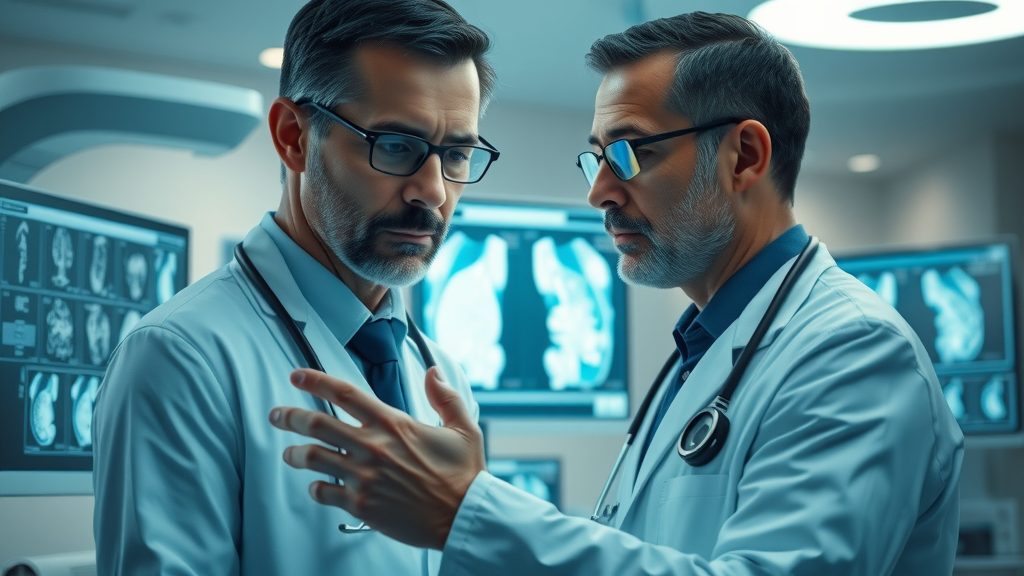
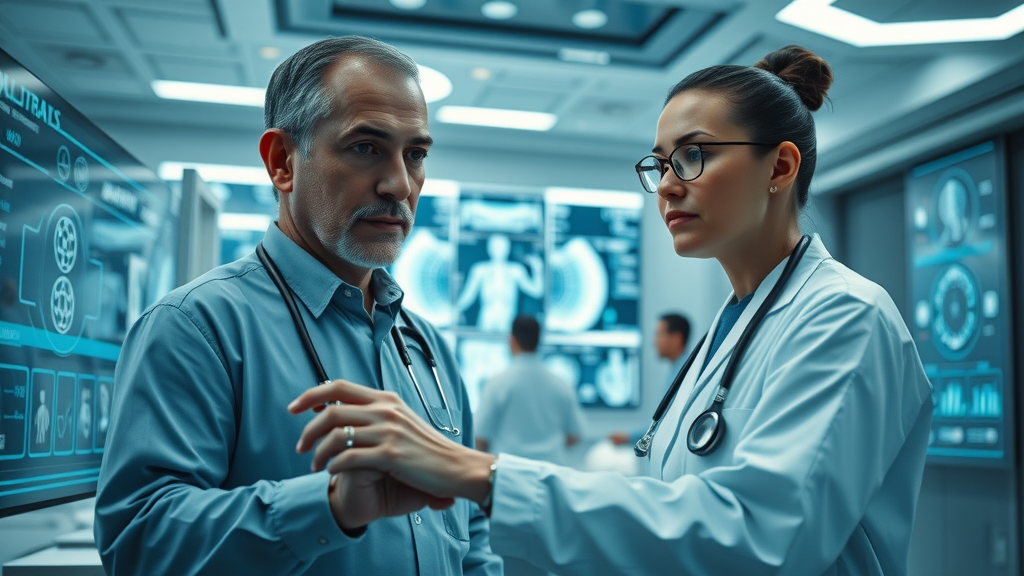

Write A Comment